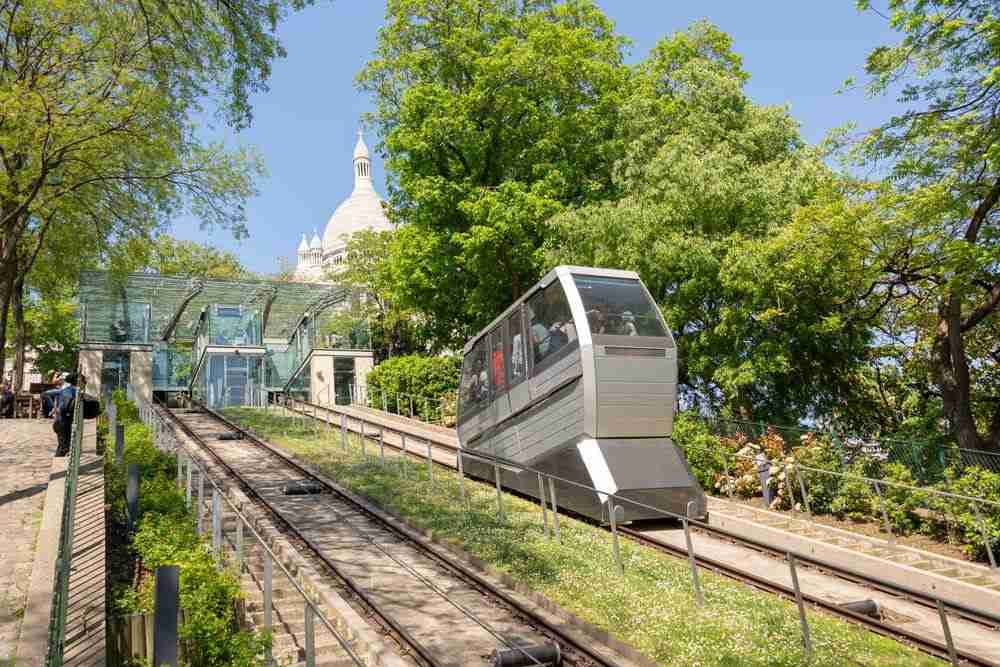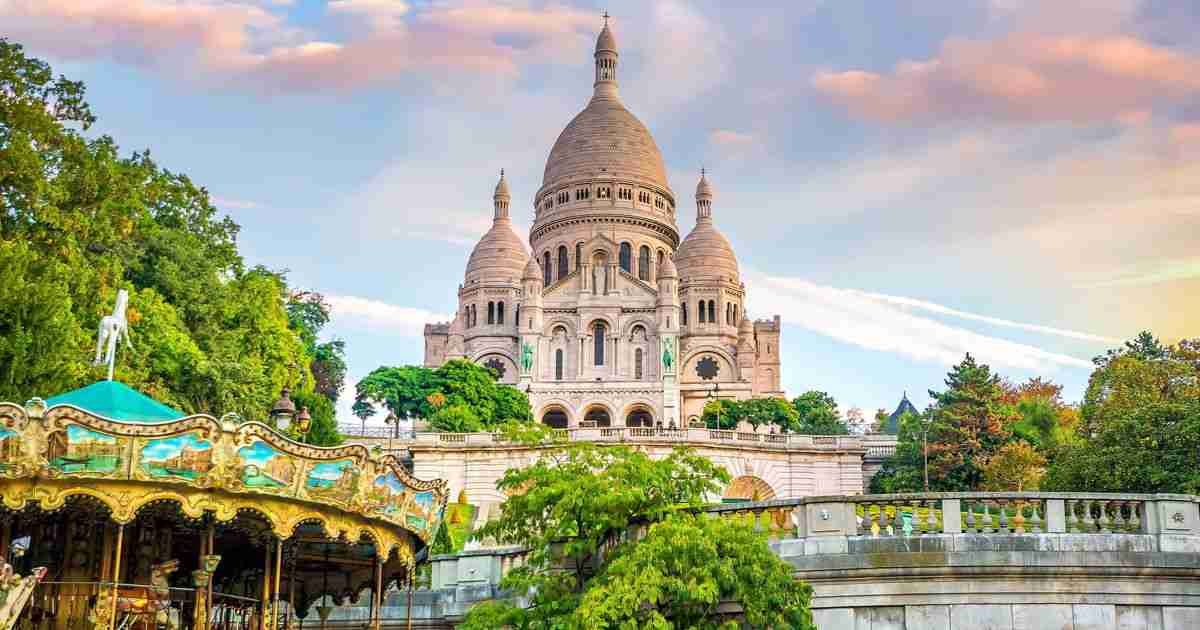Getting inside the church Sacré-Cœur Basilica, you will be enchanted by the mystical atmosphere. The massive mosaic under the altar describing Christ in Glory is the largest mosaic of France and among the largest mosaics in the world.
First stained glass windows were installed between 1903 and 1920, but during the war they were destroyed because of bombing in 1944. The windows we see today were reinstalled in 1946.
There is no ticket to get in, but it is possible to wait in the queue a little bit for the security check. Taking photos is not allowed inside the basilica.
The basilica's grand organ was built in 1989 by the famous Aristide Cavaille- Coll, is considered one of the most remarkable in Europe. More details concerning the Basilica below.
View of Paris from Sacré-Cœur Terrace

The dome offers a spectacular view of Paris and the Montmartre Quarter. To climb there, you should go out from the basilica and get a ticket. It is the second highest point in Paris after the Eiffel Tower. It will be a unique experience to see Paris and surroundings from there.
What can I do in Montmarte Quarter in Paris ?

The name "Montmartre" derives from "Mons Martis" that means "Mount of Mars". There used to be two temples on the hill dedicated to Roman Gods Mars and Mercury long before Christianity.
Montmartre was a small village mostly inhabited by farmers before Sacre-Cœur was built on the hilltop in 1873. It became a place that attracted artists and art students from all over the world in the 19th century.
Picasso Salvador Dali, Claude Monet, Vincent van Gogh and Amedeo Modigliani are among the painters who worked on Place du Tertre which was the main square of Montmartre.
Today it is very busy and popular neighbourhood with its nostalgic cultural texture. It is famous with its painters, portraitists, cosy cafes, narrow cobblestone streets, museums and art galleries.
Entrance, Tickets and Tours of the Sacré-Coeur Basilica

How to get to the Sacré-Cœur in Paris ?
Metro : There is no metro up to the hill. The closest metro stations are "Anvers" and "Pigalle" on the line 2. Likewise the stations "Jules-Joffrin" and "Abbesses" on the line 12 can be used.
After a short walk you'll reach the stairs. There you can decide to take a funicular or climb up to the hill.
Funicular : Funiculaire de Montmartre carries 2 million people per year.
Tickets for the funicular are the same type used for the metro, bus or RER. The journey takes less than 2 minutes, but on busy days, waiting in the funicular line can take longer than using the stairs.

FAQ (Frequently Asked Questions)
It takes approximately 20 to 30 minutes to visit the basilica.
It means "Sacred Heart" referring the heart of Jesus as a representation of his affection to the humankind.
History of the Sacré-Cœur Basilica in Paris

There used to be a very old place of worship where the basilica was built upon belonging to the Gauls, Celtic people who lived here before the arrival of Roman Empire.
Constructed in the period following the French - Prussian War of 1870, initially became a symbol of the neoconservative order in France following its defeat.
The intention for it's construction stated by the archbishop of Paris was "the atonement of the crimes of the Commune". Today, the Sacré-Cœur Basilica has a different value, dedicated to 58 000 people who lost their lives during the war.
After the turbulent war period, the basilica was decided to be built by a law submitted by the French National Assembly in 1873. A competition was held to build a magnificent basilica loyal to Christian traditions. The architect Paul Abadie was the winner of this competition.
The construction began in 1875 and was completed in 1914. Most of its expenses covered by the donations of the French people. The building was officially opened in 1923.
Most Popular Ticket Options:
Contact
Paris Tours & Tickets
Discover Paris today with the most preferred tours & tickets without waiting in line.

